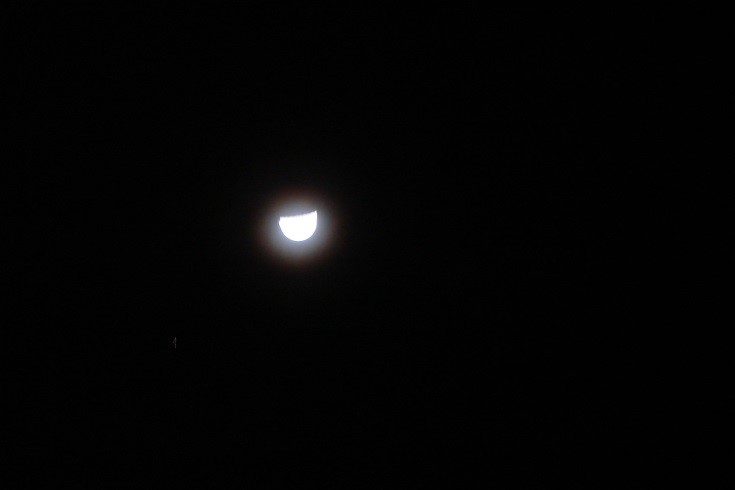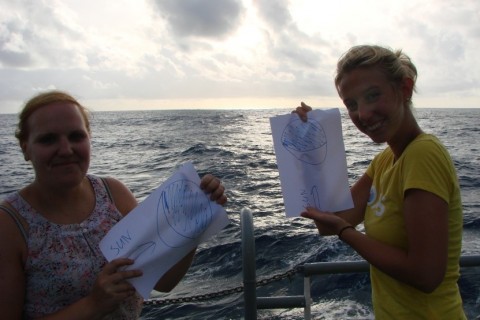Night shifts are very manifold. You get to work all by yourself in the lab, empty the fridge in the kitchen, have a chat with fellow night workers and, here comes the best part, sit outside and watch the stars. This is also the nice part of cruising in the high risk area (no lights outside): we can experience the night sky in its whole beauty, which some people find very romantic. But every night our discussion is going the same way: why is the moon lying on its back? Several schematics have been made, several hands served as moon, earth and sun, and everybody got caught in intensive discussions. We suggested an approach of taking the latitude and the moons’ ecliptic and the sun’s seasonal position as a possible explanation, but to make all our frequent blog readers part of this discussion – we expect opinions!
The high risk area brings another special feature: sitting all relaxed in the mess playing cards we were interrupted by the crew informing us about tons of Portuguese man o’ wars swimming in the area. This lead to some worries in the group of non-biologists: man o’ wars? The only association is boats and since we cruise around in the piracy area, the first thought was of pirate boats awaiting us at 10°S. Luckily this wrong (but fun) mistake got clarified which means that now everybody needs to watch out for poisonous jellyfish in the CTD. Apart from those funny, but poisonous jellyfish, some other animals finally joined us at the night CTDs: flying fish jumping (flying) around (sometimes even onto the deck), and squid hunting them. However, all other animals living in the Indian Ocean still seem to be too shy to show themselves. But the last CTD stations close to the Maldives may promise more visitors.
Apropos CTD: We are approaching another 26 hour station, which means that we will all be busy making plans, preparing bottles, staying awake late. But we hope to find some time under the night sky to get back to the daily moon-discussion!
by Gesa Eirund and Helmke Hepach


Hi Helmke and Gesa,
I have been following you and all the other writers for the last weeks. I really like the blog and the pictures.
I might give an explanation of your problem with the moon:
It all depends at which angle you see the path of the sun and the moon(ecliptic) on the sky. As you live in germany and started there in summer the sun as well as the moon was pretty high up in the sky. So in the morning you see a lying “Mondsichel” at noon a standing and at night again a lying one(upside down). This is because the bright part is always pointing at the sun, and the ecliptic is at a right angle with the horizon.
In the southern hemisphere(winter) the ecliptic is at a very low angle in relation to the horizon. So the sun and moon are travelling very low across the horizon. This results in a standing “Mondsichel”. I am sorry that I don’t have any drawings as beautiful as yours, but it is really just depending on the path of the ecliptic.
Keep on posting,
Axel